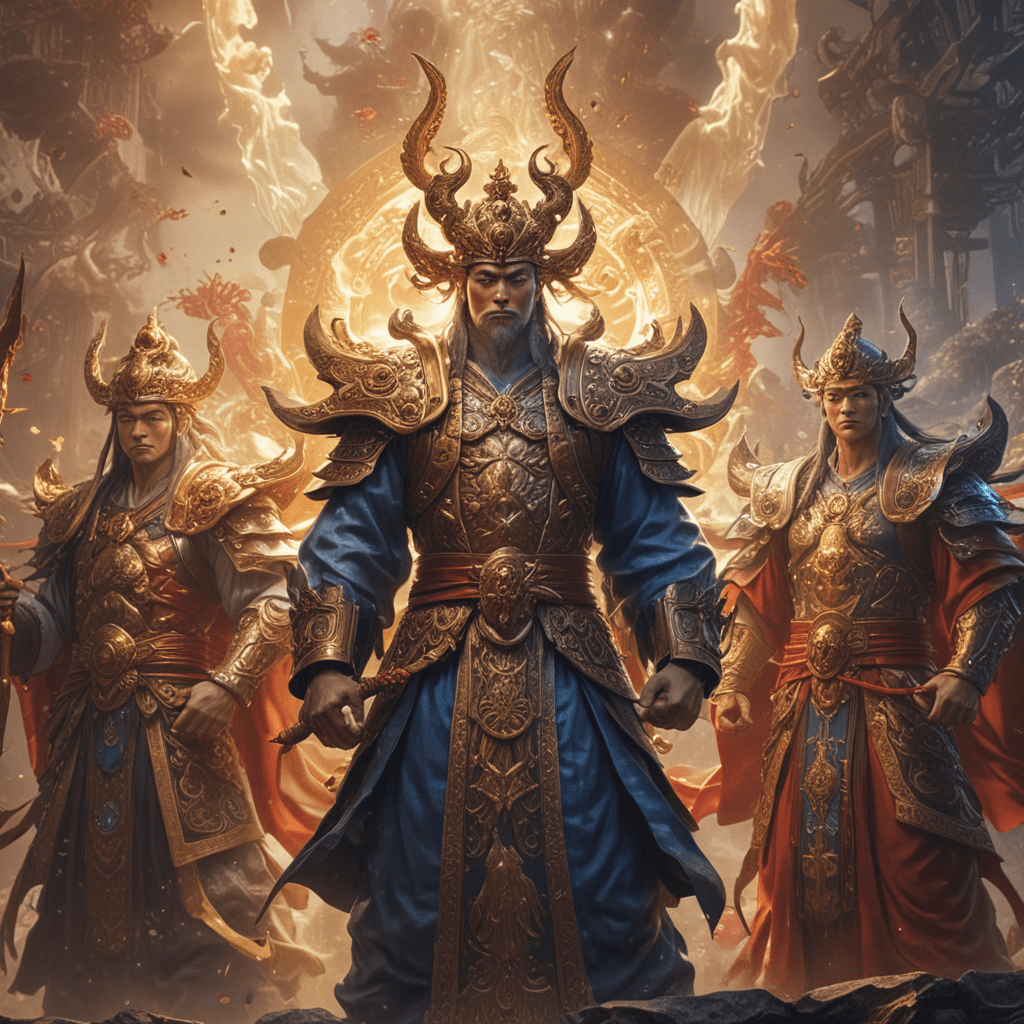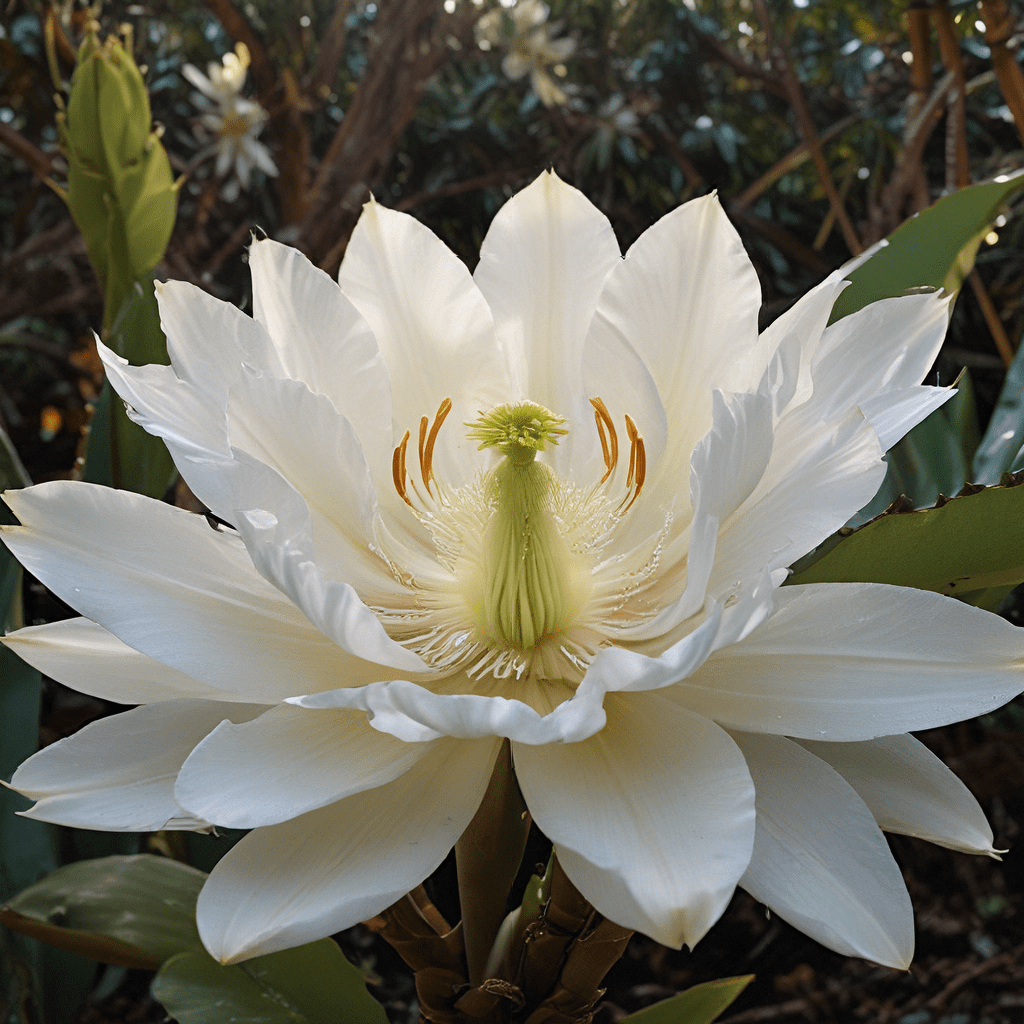The Cosmic Symphony: Creation Myths That Harmonize Cultures
I. Introduction: The Universal Language of Creation Myths
Creation myths are narratives that explain the origin of the universe, humanity, and the natural world. They serve as foundational stories for cultures, providing a framework for understanding existence and identity. Across the globe, these myths reveal profound truths about human experience and the societies that create them.
Creation stories play a crucial role in shaping cultural identity, offering insights into the beliefs, values, and practices of different communities. This article explores the harmonizing themes found in diverse creation myths, illustrating how they reflect shared human experiences despite distinct cultural contexts.
II. The Role of Myth in Human Experience
Myths serve essential functions in societies, acting as vehicles for cultural transmission and collective memory. They help communities articulate their values and beliefs, providing a sense of belonging and continuity.
Moreover, myths often serve as tools for explaining natural phenomena. They provide answers to existential questions, offering comfort and understanding in the face of life’s mysteries. The psychological and emotional resonance of creation stories allows individuals to connect deeply with their cultures and the world around them.
III. Common Themes in Creation Myths
Despite the diversity of creation myths, several common themes emerge:
- The emergence of the universe from chaos: Many myths depict the cosmos emerging from a primordial void or chaos, highlighting the transformative power of creation.
- The role of divine beings or forces: Creation often involves gods, deities, or cosmic entities who shape the world, reflecting humanity’s quest for understanding the divine.
- The creation of humanity and its purpose: Myths frequently explore the origins of humanity, addressing questions about purpose, morality, and the relationship between humans and the divine.
IV. A Journey Through Diverse Cultures
To appreciate the richness of creation myths, we can embark on a journey through various cultures:
A. Indigenous Creation Stories
- Native American myths: Many Native American tribes have unique creation narratives that emphasize the interconnectedness of all life, often featuring animals and nature as central figures.
- Aboriginal Australian narratives: The Dreamtime stories of Aboriginal Australians describe the creation of the land and its inhabitants, emphasizing the spiritual connection between people and their environment.
B. Ancient Civilizations
- Mesopotamian creation myths (e.g., Enuma Elish): This ancient Babylonian epic describes the battle between gods and the subsequent formation of the world from the body of the defeated goddess Tiamat.
- Egyptian cosmology: Egyptian myths often center around the god Atum, who creates the world through his thoughts and words, reflecting the power of creation through speech.
C. Eastern Traditions
- Hindu creation narratives (e.g., Vishnu’s cosmic sleep): In Hindu mythology, the universe is said to emerge from the cosmic ocean during Vishnu’s sleep, symbolizing cycles of creation and destruction.
- Chinese myths (e.g., Pangu and the creation of the world): The myth of Pangu tells of a giant who separates heaven and earth, illustrating the theme of duality in creation.
V. The Influence of Geography and Environment on Creation Myths
Geography and environment significantly shape creation myths, influencing the narratives that cultures develop. For instance:
- How landscapes shape mythological narratives: Coastal communities often have myths centered around the sea, while mountainous cultures may emphasize the significance of heights and valleys.
- The impact of climate and resources on cultural stories: Scarcity and abundance in nature can lead to myths that reflect survival, adaptation, and relationship with the environment.
- Comparative analysis of coastal vs. mountainous creation myths: Coastal myths may focus on the fluidity and unpredictability of the ocean, while mountainous myths might highlight stability and permanence.
VI. The Intersection of Science and Mythology
The relationship between creation myths and modern scientific theories invites intriguing discussions. Creation myths can coexist with scientific understanding, providing complementary narratives:
- Creation myths in the context of modern scientific theories: While science offers explanations based on observation and evidence, myths provide meaning and context to these facts.
- The Big Bang vs. mythological creation events: Some see parallels between the Big Bang theory and myths of cosmic creation, as both describe beginnings from a singularity or chaos.
- How myths can coexist with scientific understanding: Myths often address the “why” of existence, while science focuses on the “how,” allowing both to coexist in human thought.
VII. The Role of Oral Tradition in Preserving Creation Myths
Oral tradition is vital in preserving creation myths, ensuring their transmission across generations:
- The importance of storytelling in cultural transmission: Oral narratives keep the myths alive, allowing communities to connect with their past.
- The evolution of myths over time: As cultures change, so do their myths, adapting to new contexts while retaining core themes.
- The impact of technology on myth preservation: Modern technology offers new platforms for storytelling, but also poses challenges to traditional oral practices.
VIII. The Artistic Expression of Creation Myths
Creation myths have inspired various forms of artistic expression:
- Representation in literature and poetry: Writers and poets often draw upon mythological themes to explore human nature and existence.
- Visual arts inspired by creation stories: Artists depict creation myths through paintings, sculptures, and installations, bringing these narratives to life visually.
- The influence of music in conveying mythological themes: Composers use music to express the grandeur and emotion of creation stories, bridging the gap between sound and story.
IX. Contemporary Relevance of Creation Myths
Creation myths continue to resonate in modern societies, often reinterpreted and reimagined:
- How modern societies reinterpret ancient stories: New interpretations can reflect contemporary values and challenges, making these myths relevant.
- Creation myths in popular culture (films, books, etc.): Many films and novels draw inspiration from creation myths, exploring their themes through modern narratives.
- The role of myths in contemporary social and environmental movements: Myths can inspire movements that seek to reconnect with nature and advocate for environmental sustainability.
X. Conclusion
Creation myths serve as a cosmic symphony, harmonizing the diverse cultures of humanity. By exploring these myths, we uncover shared themes that resonate across time and space. They remind us of the fundamental questions of existence and our place in the universe, bridging the gaps between cultures and fostering a deeper understanding of our shared humanity.



